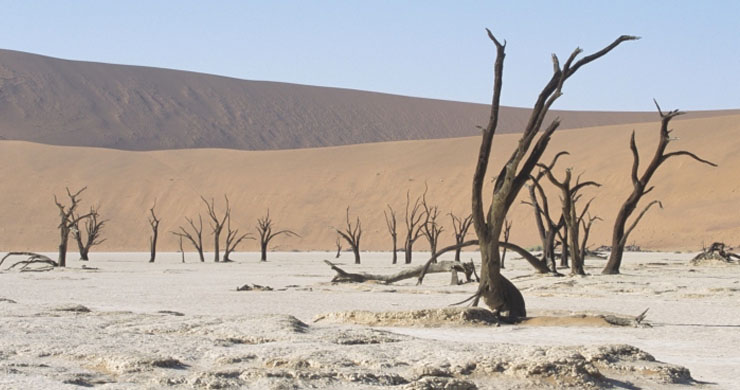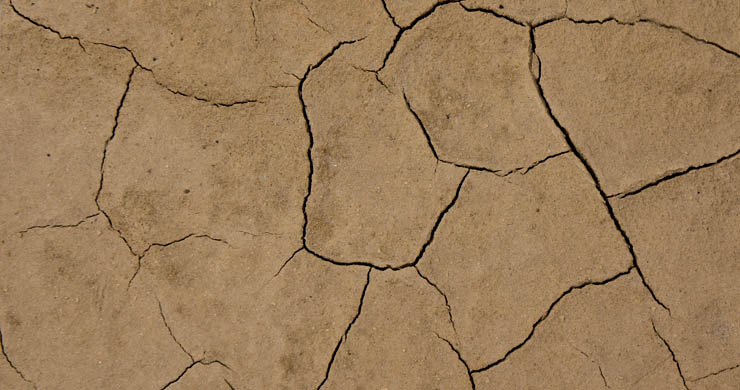Desert People
Life in the Desert
Deserts are often described as ‘dry’, ‘arid’, ‘scorched’, ‘lifeless’ and ‘empty’.
But while it is true that deserts receive very little precipitation, not all are hot and they certainly cannot be described as lifeless.
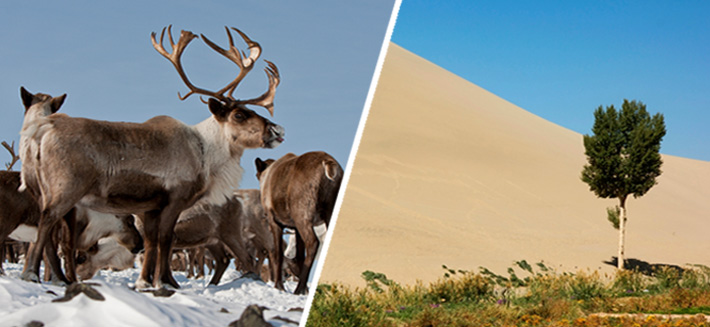
Earth’s deserts have also been called wildernesses (meaning that they are not farmed or cultivated and are hard to live in) but they are not uninhabited. In fact, if you include semi-deserts like the Sahel in Africa and the Russian Steppe, there are more than 1 billion people living in these ‘wildernesses’.
In this final article of Geography in the News Issue 24 we will focus on the way that desert-dwelling communities have interacted with their environments and adapted to the harsh, unforgiving conditions.
We will look at three deserts around the world – each one different from the others and each one home to a distinct group or groups of people who have made it their home. Let’s start with the least populated desert of all:
1. Antarctica
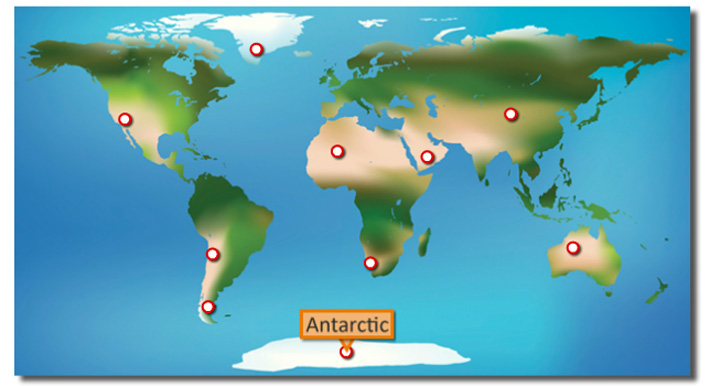
As we’ve already discussed, Antarctica is the largest desert on Earth. Although it is covered by thick layers of ice and snow, most of the continent receives very little precipitation (between 50-250mm per year). The high wind speeds remove water from the air and the extremely cold temperatures result in high atmospheric pressure and clear blue skies. No clouds = no rain or snow.
Antarctica is not only the largest desert, it is also the most southerly continent on Earth and the most isolated. The northern-most tip of the Antarctic Peninsular is about 600km from the southern tip of Argentina in South America.
It’s not just the distance either. Between South America and Antarctica lies the Southern Ocean, which flows around Antarctica from west to east and averages between 4000-5000 metres deep. Low temperatures, very high winds and frequent extreme storms make Antarctica very difficult to reach.
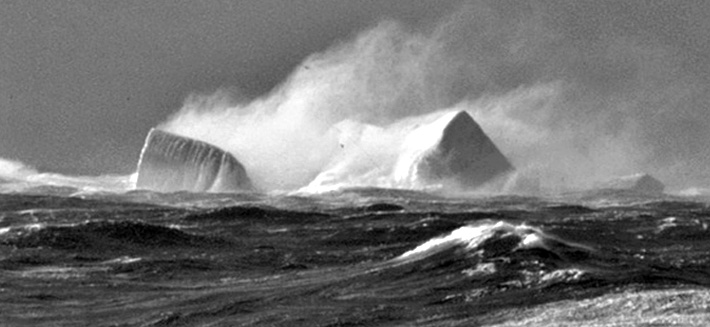
Even if you do manage to get there, most of the land is covered by hundreds of metres of ice and the temperature in the middle of the continent averages -57°C.
Despite the extraordinary harshness of the environment, a small group of between 1000-5000 people live on Antarctica and its nearby islands throughout the year. The first communities were established on the Antarctic island of South Georgia, which was used as a base for seal hunters and whalers in the 18th, 19th and 20th Centuries until the 1960’s.
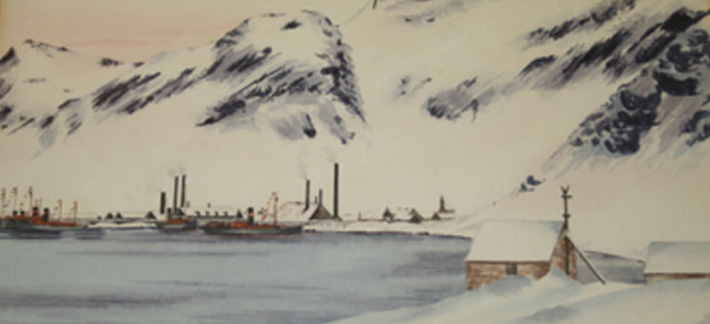
Grytviken whaling station, South Georgia
The only people living on Antarctica itself are scientists and support staff at 40+ research stations around the continent. These stations are entirely dependent on the countries that set them up and it is therefore arguable as to whether it can be called a permanent population at all. That said, at least ten children have been born in Antarctica since 1978 at two Chilean and Argentinian bases, and there are even churches and chapels at several research bases. It would appear that Antarctica’s population is here to stay.
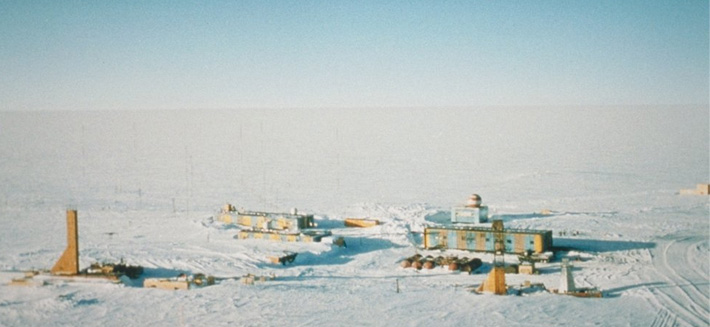
Vostok research station, Antarctica
2. Arabian Desert
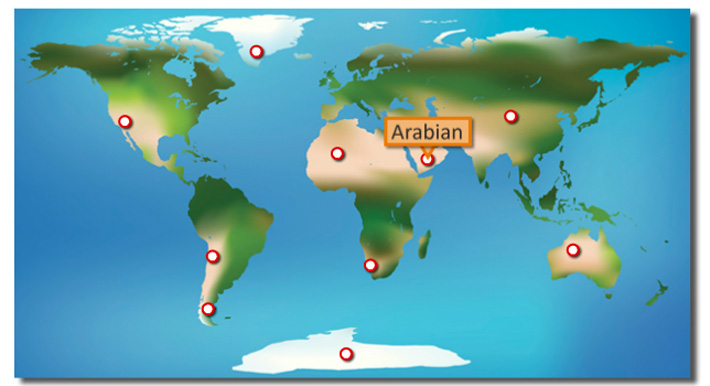
The world’s fourth-largest desert (the second-largest hot desert after the Sahara) is located in the Middle East and stretches from Jordan and Iraq in the north to Yemen and Oman in the south. At its centre is Rub’ al Khali, ‘the empty quarter’, which at 650,000 square kilometres is one of the largest continuous bodies of sand on Earth. However, although the Arabian desert is very inhospitable, it is also home to a rich human culture stretching back for thousands of years.
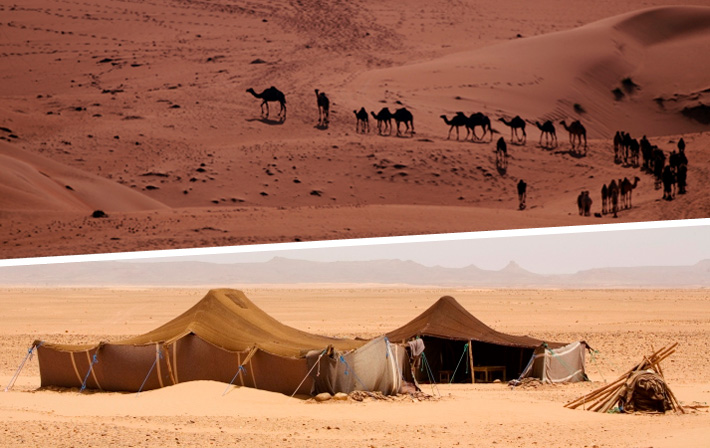
Around 20,000 years ago nomadic families and tribes moved around the fertile uplands in the centre of the peninsula and the greener coastal regions looking for places to graze their animals. In the Arabian desert itself, oases (isolated areas of vegetation around springs and other sources of water) allowed nomads to explore the wildernesses by traveling from one oasis to the next.
The largest oasis on Earth, Al-Ahsa’a in eastern Saudi Arabia, has evidence of human habitation since pre-historic times. During the first millennium AD it was one of the largest population centres in the world, with tens of thousands of people draw to the oasis by its numerous natural springs.
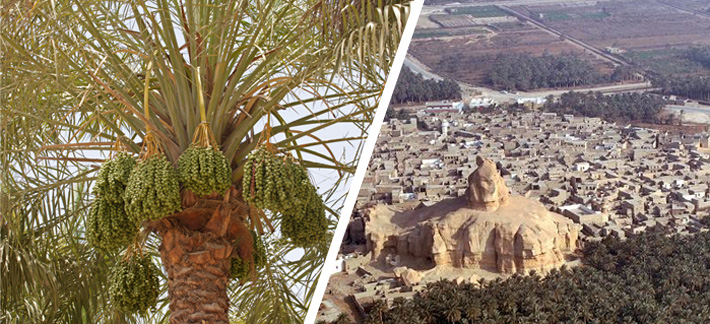
Al Ahsa'a, Saudi Arabia
Agriculture was established at this time and Al-Asha’a continues to grow high-quality dates which are shipped around the world. Al-Asha’a remains one of the few places in Arabia where rice is grown. Other crops include corn, wheat, lemons and other fruits. Date palms are the largest crop, with over 3 million trees in the largest farm alone.
A detailed knowledge of the oases of the Arabian Desert has been fundamental to the establishing of human civilisation in the area. When people think of the desert, many will instantly picture camel herders wearing long robes and headscarves traveling across vast sand dunes under a burning sun. The traditional Bedouin tribes of the Arabian Desert fit just this description, albeit they may travel with Land Cruisers and satellite phones these days.
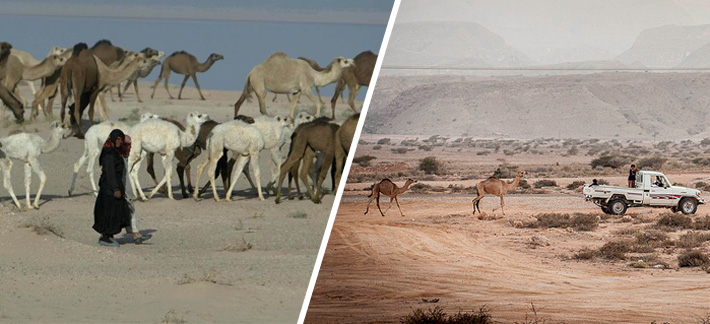
Until the 1960s the majority of the population of Saudi Arabia were nomadic, traveling across the desert with their livestock using wadis (desert rivers that only fill when it rains) and oases to graze their crops. The Bedouin are just part of the population of the Arabian Peninsula, alongside other Arabs and minority groups of Afro-Arab and Afro-Asian people. However, their influence on the development of Middle Eastern and North African culture has been huge.
In the last 50 years the number of nomads has declined drastically in the Arabian Desert and less than 5% of the population of Saudi Arabia is now nomadic. The rapid economic development fuelled by vast reserves of oil and gas under the desert has resulted in the growth of large cities, especially on the north-west coast of the Arabian Peninsula in countries like Qatar, Kuwait and the United Arab Emirates (UAE). Man-made oases of concrete, steel and glass have grown in the desert, the pinnacle of which is Burj Khalifa skyscraper in Dubai which stands 829.8 metres tall in the city of Dubai, UAE.
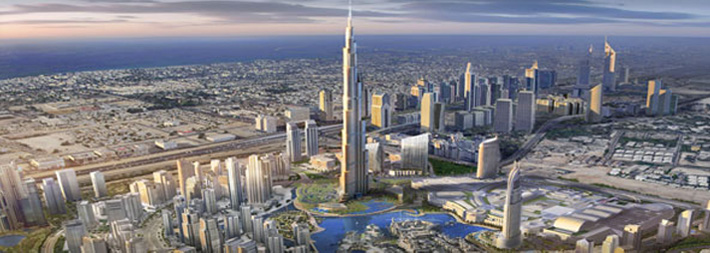
Burj Khalifa, Dubai
3. Gobi Desert
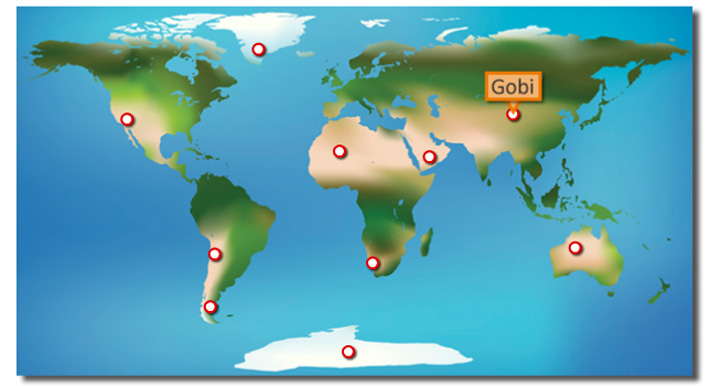
The Gobi (which means ‘desert’ in Mongolian) is the largest desert in Asia, the fifth largest on Earth and the biggest cold-winter desert in the world. It covers parts of southern Mongolia and northern China, and lies north of the Himalaya mountain range which blocks rain clouds traveling north from the Indian Ocean, reducing precipitation over the Gobi to a minimum. This is way it is also called a ‘rain-shadow’ desert.
One of the driest parts of the Gobi Desert is the Eastern Gobi desert steppe. ‘Steppe’ comes from a Russian word for, you guessed it, ‘step’ and refers to large, predominantly-flat plains with no trees. Some steppes (also called prairies in the USA) are covered with grass and shrubs. Dry steppes, however, are more barren and the Eastern Gobi steppe receives very little rain or snow each year and is classified as a desert.
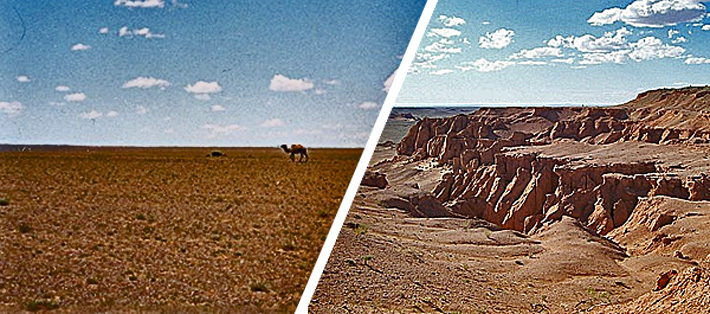
The Eastern Gobi steppe has no trees, only low hills, and is dominated by vast flat areas. Wind-blown dust and silt fills depressions and dry valleys to create deposits called ‘loess’. Temperatures in the Gobi desert range from an average of -40°C in the winter to as high as 50°C in the heights of summer.
The earliest human settlers in Mongolia grew crops, but livestock herding (pastoral nomadism) has been the dominant lifestyle in the Gobi Desert for centuries and has shaped the region culturally and politically for more than 2000 years. One animal, more than any other, has shaped the human history of Central Asia, including the Gobi Desert – the horse.
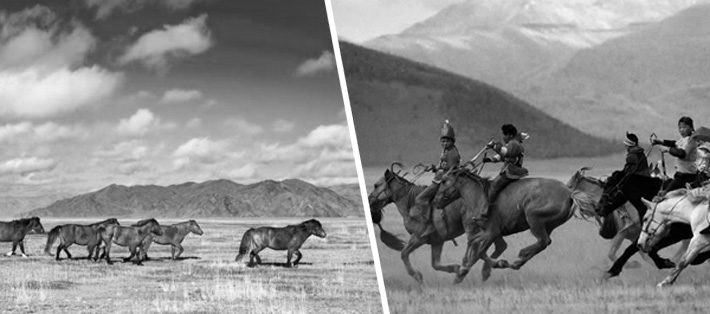
Horses were first tamed (domesticated) as early as 5000 BC and ridden from at least 3000 BC. This allowed nomads to travel widely and quickly, as well as providing milk and meat. Other animals like goats and camels were herded and used as pack animals as well, but the horse has played a pivotal role in the history of the Gobi Desert and the rest of the Eurasian Steppe for another reason – war!
Throughout history, the nomadic tribes of the Mongolian Steppe have joined together from time to time to form empires and control vast areas of Central Asia, including the Gobi Desert. The first of these was the Xiongnu, who formed a confederated state in 209 BC which lasted for 300 years.
While they ruled what is now Mongolia, the Xiongnu fought many battles with the Han Dynasty of China. Both sides used vast armies of tens and hundreds of thousands of cavalrymen (horseback warriors), The infantrymen, who fought on foot, also travelled on horses to allow them to cross large distances quickly.
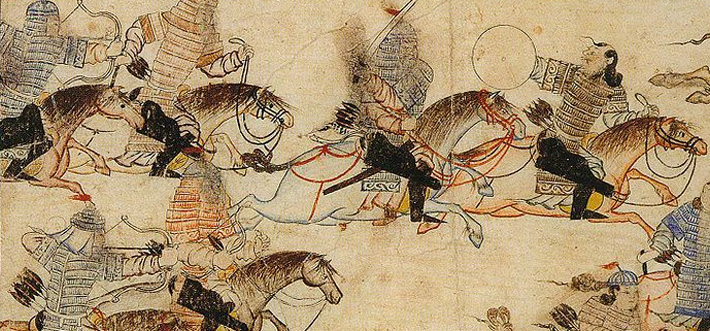
In 119 AD, a series of battles took place in the northern Gobi Desert. In the first, the elite cavalry of the Han Dynasty dominated the battle and quickly defeated the Xiongnu forces. A second battle was not so straight-forward and the Gobi Desert itself had a role to play. The Xiongnu cavalry surrounded a section of the Han armies who used their chariots to create mobile fortresses and defend themselves.
By the end of the day, the battle was at stalemate. However, as dusk began a sandstorm blew across the battlefield, the Han sent in their remaining cavalry to attack the Xiangnu while the flying sand made it hard to see. The Xiangnu were defeated and chased across 100 miles of desert by the Han Dynasty’s horsemen.
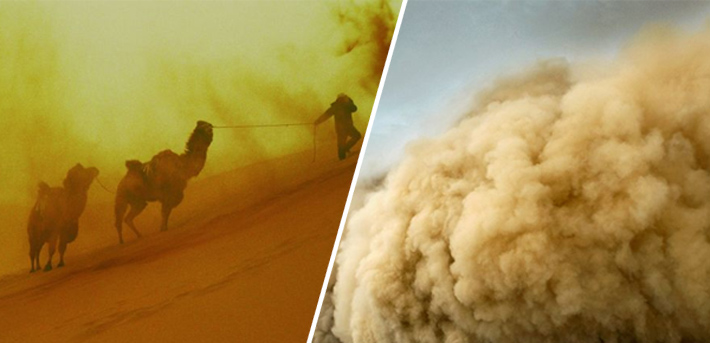
The use of large armies traveling and fighting on horseback became a normal part of wars and empire-building in Central Asia. The harsh environment of the Gobi Desert and Mongolian Steppe had bought about a way of life which, by the 13th Century AD, had helped Genghis Khan and his descendants establish the mighty Mongol Empire, the largest land-based empire ever!
Even the harsh East Gobi desert steppe was no longer a barrier, as nomads and merchants used horses and camels to establish trade routes across the Gobi desert between Mongolia and China. These trade routes ran the length of three continents, from Korea in the east to Western Europe and Africa in the west.
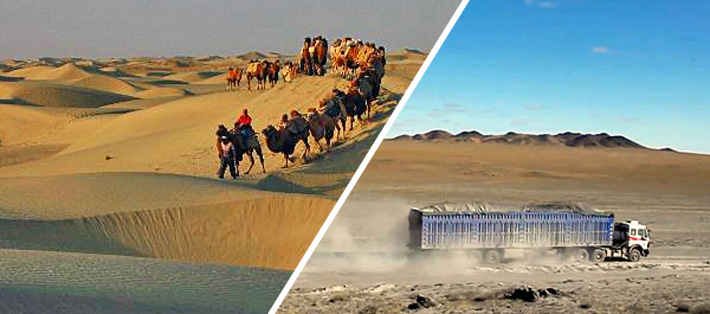
Trade routes in the Gobi
Even today, almost one third of Mongolian households earn their living by breeding livestock and many of them spend at least part of the year as nomads, traveling across the steppe in search of the best grazing grounds. They still get meat and milk from their horses too, although these days you can buy the horse milk in supermarkets as well. That’s modern life in the wilderness!
Now that you have finished reading all three articles in this edition of Geography in the News, why not go back to article 1, “Deserts”, and try the quiz again. Then come back and try the pupil activity below.
Pupil Activity
Working in the same groups as for the activity in article 2 of this issue of Geography in the News, prepare a report about the people and communities living in the desert you researched last time.
Be specific! Desert-dwelling communities are often very tribal and there can be big differences in lifestyle, culture, language and religious beliefs from one tribe or community to the next. There are lots of resources on the internet to tell you about them – once you have decided which nation, ethnic group or tribe you want to write about then use some of the websites listed below to find out more about them.
Be specific! Desert-dwelling communities are often very tribal and there can be big differences in lifestyle, culture, language and religious beliefs from one tribe or community to the next. There are lots of resources on the internet to tell you about them – once you have decided which nation, ethnic group or tribe you want to write about then use some of the websites listed below to find out more about them.
Your report should include:
-
At least one map showing where the people you have decided to write about come from
-
Some relevant details about the desert they live in (don’t just repeat large sections from the previous exercise – choose facts that relate to the way that the people live)
-
The traditional lifestyle and culture of the community you have chosen
-
Information about the way the changes in the world have affected them and the challenges they are facing. This could include:
-
changes of land use
-
loss of grazing
-
political and economic changes (e.g. forced settlement, loss of income)
-
environmental changes (e.g. climate, desertification)
Finish your report by giving your evidence-based ideas and opinions about what the future holds for you chosen community – how might things change, for better or worse, over the next 50-100 years?
Present your report professionally – include relevant pictures, diagrams and graphs to give evidence of what you have written. Give in your finished report to your teacher for marking.
Sources of information:
There are lots of websites that can help you, as well as encyclopaedias and books that you might find in your school or town library. Travel books often contain information about traditional cultures in the countries they are written about.
Here are a just a few websites to give you some ideas and get you started. Remember – check your facts! Just because you read something in one place, doesn’t mean it is true. Check another source as well.
